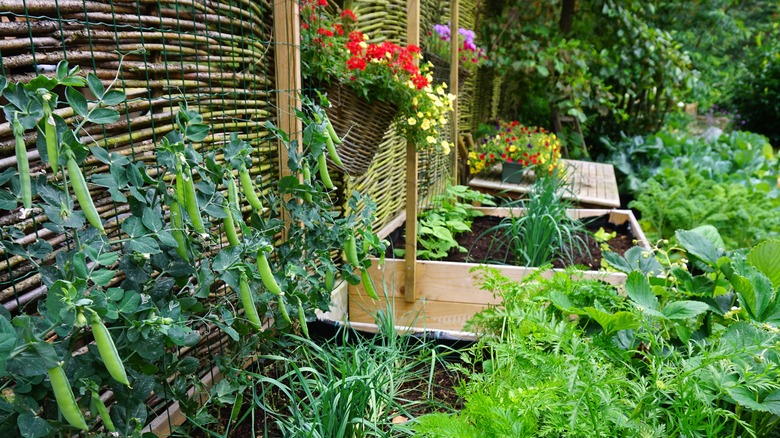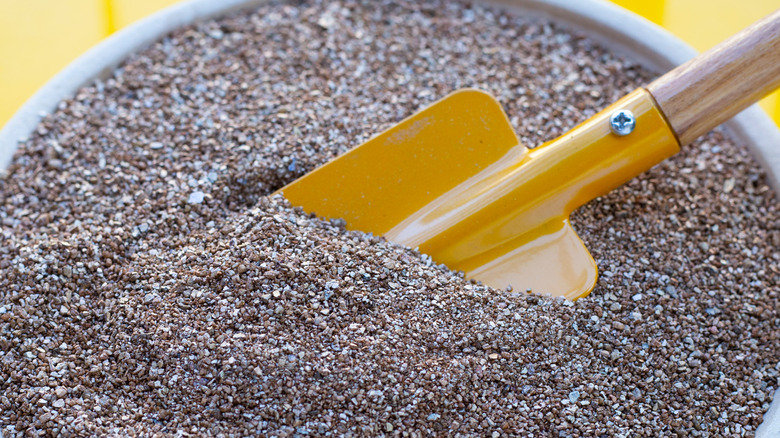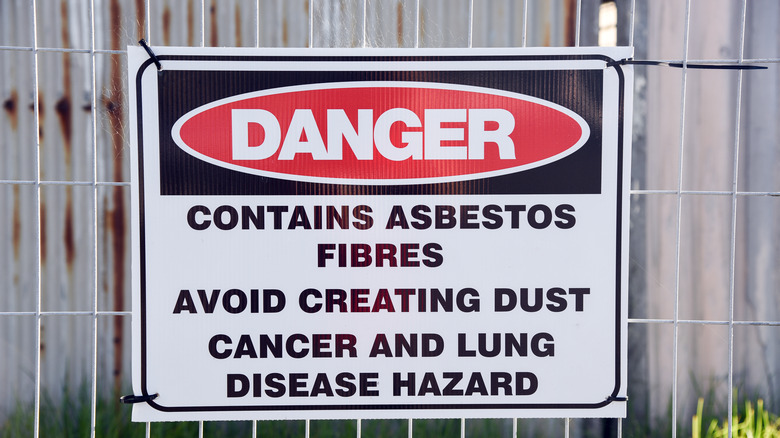Here's Where Dangerous Asbestos May Be Hiding In Your Garden
Up until the 1980s, asbestos was used in various products, including fences, garden beds, and flower pots, because it is a durable, natural material. The mineral was also sometimes found in the soil due to potting mixes that contained it. While asbestos was widely used in the past, it is now known to pose serious health risks. When the mineral is disturbed, its tiny particles float in the air and can be inhaled, which can lead to mesothelioma, chronic obstructive pulmonary disease, asbestosis, cancers, and other diseases, according to The Mesothelioma Center.
While it may seem that the mineral is more likely to be found inside a home, such as in asbestos insulation, it can be located in outdoor structures or the ground, and it's crucial not to disturb it. Inhaling or swallowing asbestos is dangerous, and if you think you've discovered it in your garden, you'll need to call a professional to be certain and have it removed.
Why asbestos may be in your garden
Asbestos is hard to identify visually and typically needs testing to be confirmed, but if you have older garden beds, fences, or cement flower pots there is a chance they could contain the mineral. Asbestos cement and panels were extremely common in construction previously, and when used in garden features and fences, it was often partially inserted into the ground. Even if the mineral wasn't originally used in your yard, asbestos removal projects on your home could have contaminated the area when the asbestos was disturbed.
Vermiculite, which can sometimes contain small amounts of asbestos, is a common additive to potting mixes, and some gardeners will combine the mineral with soil themselves. If you're using pure vermiculite, it's essential to work with care and avoid stirring up dust, according to the Environmental Protection Agency. When using vermiculite, keep it wet, as this prevents small particles from getting into the air. You could also use premixed soil, which would be less likely to create dust because the soil is already damp. If you're concerned about encountering trace amounts of asbestos, try substituting vermiculite with perlite, sawdust, or peat.
What to do if you think you've found asbestos
The most important thing to remember when dealing with asbestos is that it is not particularly dangerous until it is disrupted. This is why it's crucial not to attempt to remove the mineral yourself, as you could end up kicking up dust and breathing in asbestos without realizing it. If you suspect your old cement garden fixtures may contain asbestos, leave the area and keep other people from going near the item. Before trying to make the area safer, wear protective equipment. While regular face masks might seem like they're up to the task, they will not filter out asbestos, according to the experts at Asbestos in NSW. You'll need a P2 respirator mask, which can be purchased from hardware stores, eye goggles, shoe covers, and a disposable cover to go over your clothing.
Once you're wearing your protective gear, go into your garden and use a hose to lightly spray the affected item with water. However, before watering, make sure the water pressure is low to prevent disturbing the material. Plus, the dampness will help keep the asbestos fibers from coming off the fixture. In case you are truly dealing with asbestos, place a tarp over the object and wait for a professional to assess and remove it if necessary.


